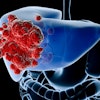Wednesday, November 30 | 3:10 p.m.-3:20 p.m. | SSM20-02 | Room S404AB
Compared with some heavy metals, iodine and barium simply don't produce enough contrast in CT to optimize dose, according to medical physicist Tristan Nowak, from the Institute of Medical Physics at Friedrich-Alexander-University Erlangen-Nuremberg. In a study to be presented Wednesday afternoon, his group tested several heavy metals in phantoms in the search for an eventual replacement.The group wanted to find the optimum contrast media-based materials to save dose in clinical contrast-enhanced CT, as they believe that iodine is a suboptimal contrast medium for clinical CT, Nowak told AuntMinnie.com.
The researchers performed simulations in water-cylinder phantoms, and measured contrast-to-noise ratios as a function of the scan protocol. The cylinders were filled with mixtures of water and iodine, barium, ytterbium, osmium, tungsten, gold, and bismuth, as well as tungsten, gold, and bismuth salts, and a commercial contrast agent. The study compared contrast-to-noise ratios and dose reduction for the various materials.
At its best, the use of heavy-metal contrast or "high-Z" contrast media enabled dose reductions of up to 84% when compared with iodine-based contrast of the same density, according to the investigators. Were higher tube voltages than 140 kV available, the dose reduction would be even greater. But is it possible to put those elements into the human body safely?
"We performed the optimization from a physicist's point of view, so we did not develop any new body-tolerant complex molecules, but rather tried to find the optimal element that should be used as a basis for the development of novel contrast media," Nowak said. "Most of the heavy metals considered in our research are ... toxic, but recent research -- e.g., in carbon nanostructures -- has already opened up new possibilities to contain such elements in biocompatible shells."



















